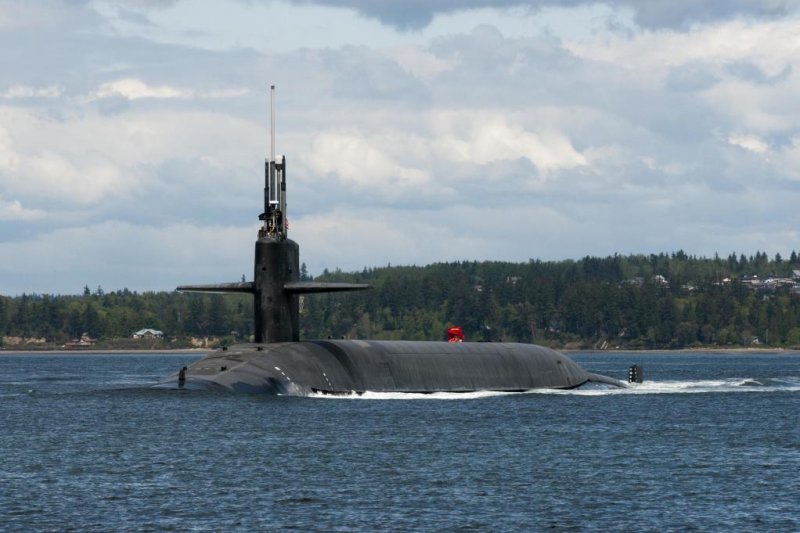The Ohio-class ballistic missile submarine USS Alabama, pictured, is one of several the Columbia-class submarines are expected to replace. U.S. Navy photo
July 17 (UPI) -- General Dynamics subsidiary Electric Boat has received a $7.7 million contract for the development of main thrust bearing and vibration reduction systems for the Columbia-class ballistic missile submarine program.
Under the contract, announced Friday by the Department of Defense, Electric Boat will design, manufacture and test protytype systems to mitigate propellor-induced structural vibrations in the vessel's hull and resultant noise.
The work will be performed in Groton, Conn., and is expected to be completed by June 2021. Navy 2017 shipbuilding and conversion funds of $7.7 million will be obligated upon award.
Vibrations caused by the main shaft driving the propelllors of surface ships and submarines produce low-frequency sound radiation that can be detected by passive sonar. Keeping shipboard mechanical and powerplant noise to a minimum is the most important part of a submarine's ability to evade enemy detection.
The Columbia-class is expected to replace the current fleet of Ohio-class ballistic missile submarines. It will field 16 Trident II D5 nuclear ballistic missiles along with torpedos for self-defese. Submarine Launched Ballistic Missiles, or SLBM, form a key part of the "nuclear triad" of U.S. land-, air-, and sea-based nuclear weapons.
Ballistic missile submarines are designed for long-endurance nuclear deterrence patrols operating under near-complete silence. They form a diifficult to detect and destroy fail-safe against the possibility of an enemy first strike destroying land- and air-based nuclear delivery systems.
The first of the 12 planned to be built, the Columbia, is expected to be complete by 2031 at a cost of $10.4 billion, counting research and engineering costs. Follow-on vessels are expected to cost over $5 billion each.















